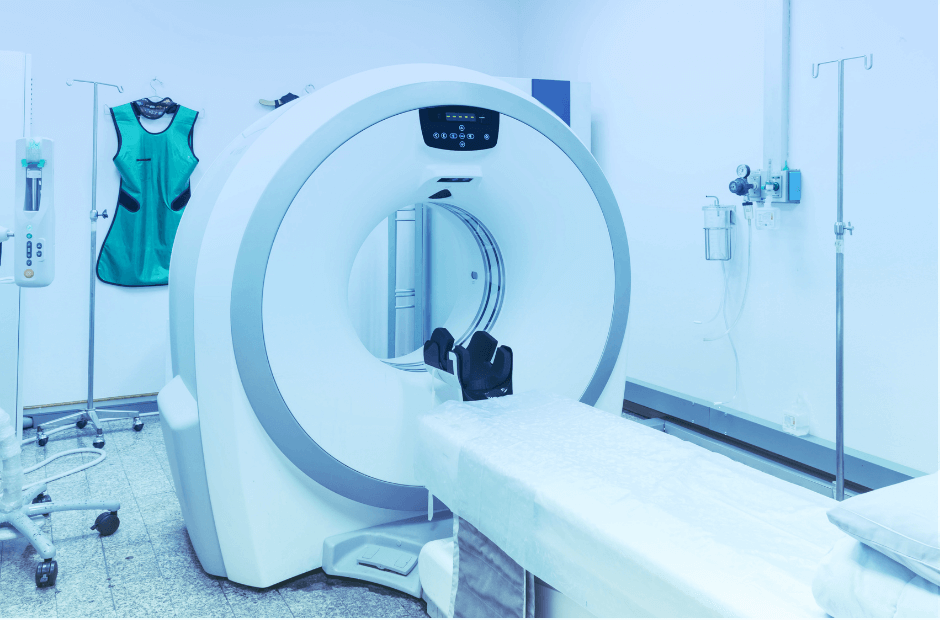Radiology is a division of science or medical specialty that uses techniques such as X-ray, Computed Tomography (CT), CT Angiography (CTA), Magnetic Resonance Imaging (MRI), MR Angiography (MRA), Ultrasound, Nuclear Medicine, and Positron Emission Tomography (PET) scans to diagnose as well as treat diseases or health conditions.
A complete radiology report is mandatory to support proper code assignment and optimal reimbursement.
Requirements for radiology report include:
- Patient name
- Referring physician name
- Date, time, and location of study
- Patient history
- Reason for the study
- Date and time of dictation and transcription
- Radiologist’s signature
Below minimum requirements should be met while coding:
1. All dictated radiology reports must contain
- Heading (study name)
- Number of views or sequences (name of views – what was done)
- Clinical indication (reason for exam)
- Body of report (findings)
- Impression or conclusion (synopsis of findings
- Physician signature
- Diagnostic studies (plain films)
2. Separate Professional and Technical Components.
- Most radiology procedures include both a technical component and a professional component
- The technical component (TC) of a service includes the provision of all equipment, supplies, personnel, and costs related to the performance of the exam. To report only the technical portion of a service, append modifier TC Technical component.
- The professional component of a service includes the physician work in providing a dictated report or dictated report and supervision. To report only the physician work portion of a service, append modifier 26 Professional component.
- A global service occurs when the physician both bears the expense of equipment, supplies, etc., and provides supervision and/or prepares the report. Global services generally take place in an office setting
3. Report Only the Number of Views Documented
- The number of views claimed must meet the basic requirements of the CPT code reported
- The medical report must state the number of views
4. Distinguish Scout View and Contrast Studies
- A scout view is a single supine view of the abdomen taken prior to gastrointestinal (GI) examinations. It may be referred to as a KUB (Kidney, Ureters, and Bladder)
- During a single contrast study, the patient ingests a thin liquid barium sulfate contrast. A double contrast upper GI study uses a thicker (heavy density) barium sulfate and effervescent crystals taken with water
5. Complete Exam” Documentation Must Be Complete
- All diagnostic ultrasound examinations require permanent image documentation
- Abdomen and retroperitoneal studies have additional, strict documentation requirements to code for a complete exam.
6. Oral/Rectal Administration Doesn’t Count as Contrast
- Whether intravenous contrast was injected determines coding for CT and MRI
- Only intravenous administration of contrast changes the code sets
- Oral and/or rectal contrast is not billable as a “with contrast” study
- To report contrast, the technique section of the dictated report must state, “with IV or intravenous contrast.”
7. Supplies
- Diagnostic nuclear medicine studies and PET do not include radiopharmaceuticals
- Hospitals and privately-owned nuclear medicine and PET departments/offices should report the radiopharmaceutical kit separately utilizing the correct supply code(s).
2022 CPT UPDATES – RADIOLOGY
There are 249 new codes in Current Procedural Terminology in effect for 2022, plus 93 revised codes and 63 deleted codes
DELETED CODES:
- Radiologic examination, complex motion body section, other than urography; unilateral (76101) and bilateral (76102).
- Epidurography, radiological supervision and interpretation (72275). The injection codes related to this code include imaging guidance.
NEW CODES:
TBS – Trabecular Bone Score (TBS), structural condition of the bone microarchitecture; using dual x-ray absorptiometry (DXA) or other imaging data on grayscale variogram,
- 77089 includes calculation, with interpretation and report on fracture risk
- 77090 technical preparation and transmission of data for analysis to be performed elsewhere
- 77091 technical calculation only
- 77092 interpretation and report on fracture-risk only by other qualified healthcare professional
GI TRACT –
New code 91113 was created to replace Category III code 0355T, described as follows:
Gastrointestinal tract imaging, intraluminal (e.g., capsule endoscopy), colon, with interpretation and report.
THERMAL NERVE DESTRUCTION –
Thermal destruction of intraosseous basivertebral nerve, including all imaging guidance
- 64628 First 2 vertebral bodies, lumbar or sacral
- 64629 Add on Each additional vertebral body, lumbar or sacral
QUANTITATIVE MULTIPARAMETRIC MRI –
Quantitative magnetic resonance for analysis of tissue composition (e.g., fat, iron, water content), including multipara metric data acquisition, data preparation and transmission, interpretation and report,
Obtained without diagnostic MRI of the same anatomy (e.g., organ, gland, tissue, target structure) during the same session;
0648T Single Organ
0697T Multiple Organ
Obtained with diagnostic MRI of the same anatomy (e.g., organ, gland, tissue, target structure) during the same session;
0649T Single Organ
0698T Multiple Organ
QUANTITATIVE ULTRASOUND TISSUE CHARACTERIZATION –
Quantitative ultrasound tissue characterization (non-elastographic), including interpretation and report
0689T obtained without diagnostic ultrasound examination of the same anatomy
0690T obtained with diagnostic ultrasound examination of the same anatomy
Below codes will be effective July 1, 2022 –
Quantitative computed tomography (CT) tissue characterization, including interpretation and report,
- 0721T obtained without concurrent CT examination of any structure contained in previously acquired diagnostic imaging
- 0722T obtained with concurrent CT examination of any structure contained in the concurrently acquired diagnostic imaging dataset
Quantitative magnetic resonance cholangiopancreatography (QMRCP) including data preparation and transmission, interpretation and report,
- 0723T obtained without diagnostic magnetic resonance imaging (MRI) examination of the same anatomy (e.g., organ, gland, tissue, target structure) during the same session
- 0724T obtained with diagnostic magnetic resonance imaging (MRI) examination of the same anatomy (e.g., organ, gland, tissue, target structure) during the same session

